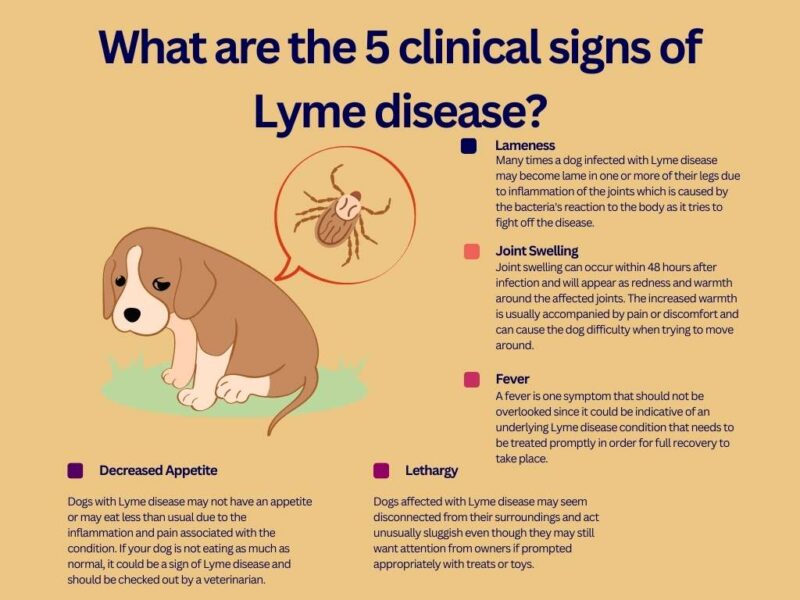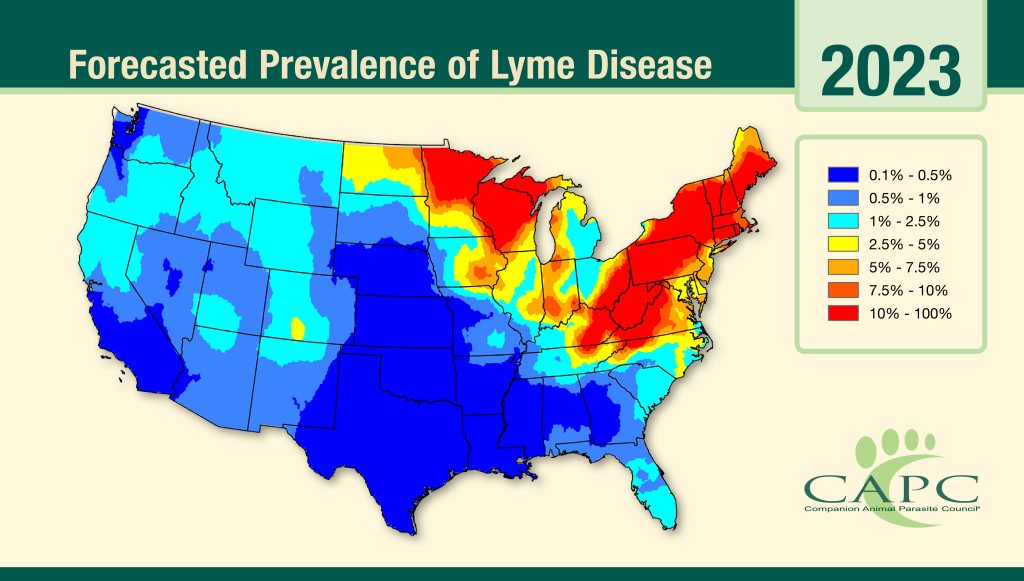
Lyme disease is one of the most common tick-transmitted diseases in the world. It is caused by a spirochete (bacteria) species of the Borrelia burgdorferi group. Dominant clinical feature in dogs is recurrent lameness due to inflammation of the joints. There may also be a lack of appetite and depression. More serious complications include damage to the kidney, and rarely heart or nervous system disease.
Symptoms and Types
Many dogs with Lyme disease have recurrent lameness of the limbs due to inflammation of the joints. Others, meanwhile, may develop acute lameness, which lasts for only three to four days but recurs days to weeks later, with lameness in the same leg, or in other legs. Better known as “shifting-leg lameness,” this condition is characterized by lameness in one leg, with a return to normal function, and another leg is then involved; one or more joints may be swollen and warm; a pain response is elicited by feeling the joint; responds well to antibiotic treatment.Some dogs may also develop kidney problems. If left untreated, it may lead to glomerulonephritis, which causes inflammation and accompanying dysfunction of the kidney’s glomeruli (essentially, a blood filter). Eventually, total kidney failure sets in and the dog begins to exhibit such signs as vomiting, diarrhea, lack of appetite, weight loss, increased urination and thirst, fluid buildup in the abdomen and fluid buildup in the tissues, especially the legs and under the skin.
Other symptoms associated with Lyme disease include:
- Stiff walk with an arched back
- Sensitive to touch
- Difficulty breathing
- Fever, lack of appetite, and depression may accompany inflammation of the joints
- Superficial lymph nodes close to the site of the infecting tick bite may be swollen
- Heart abnormalities are reported, but rare; they include complete heart block
- Nervous system complications (rare)
Treatment
If the diagnosis is Lyme disease, your dog will be treated as an outpatient, unless its health condition is severe. There are a number of antibiotics from which to choose. It is important that you keep your dog warm and dry, and you will need to control its activity until the clinical signs have improved. The recommended period for treatment is four weeks. Your veterinarian is unlikely to recommend dietary changes. Do not use pain medications unless they have been recommended by your veterinarian. Unfortunately, symptoms do not always completely resolve in some animals. In fact, long-term joint pain may continue even after the bacteria has been fully eradicated from your dog’s system.

Prevention
A variety of sprays, collars, and spot-on topical products are available to kill and repel ticks. Such products should only be used according to the label’s directions. In addition there are vaccines available for dogs; talk to your veterinarian about its availability and whether it is right for your dog.